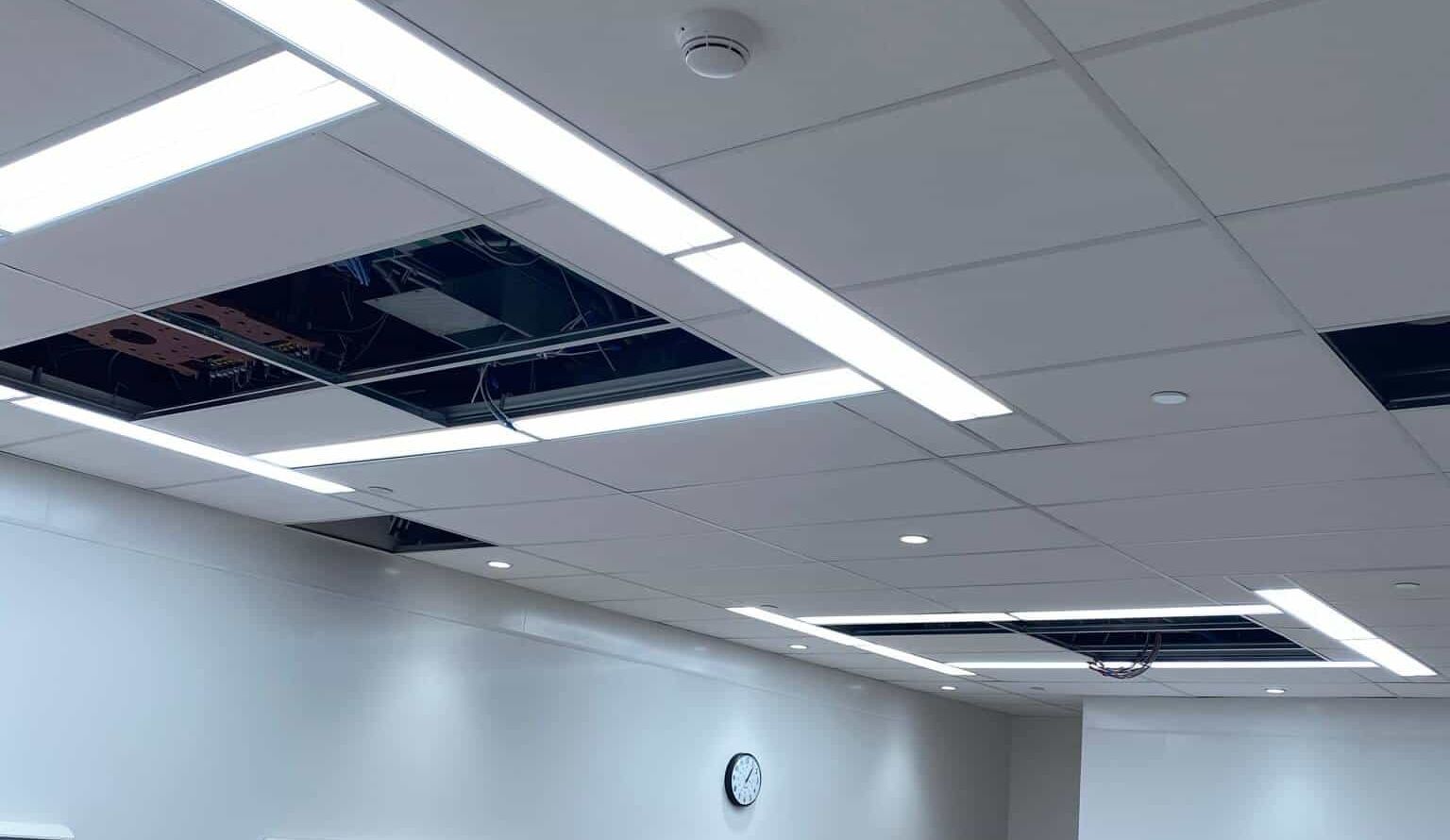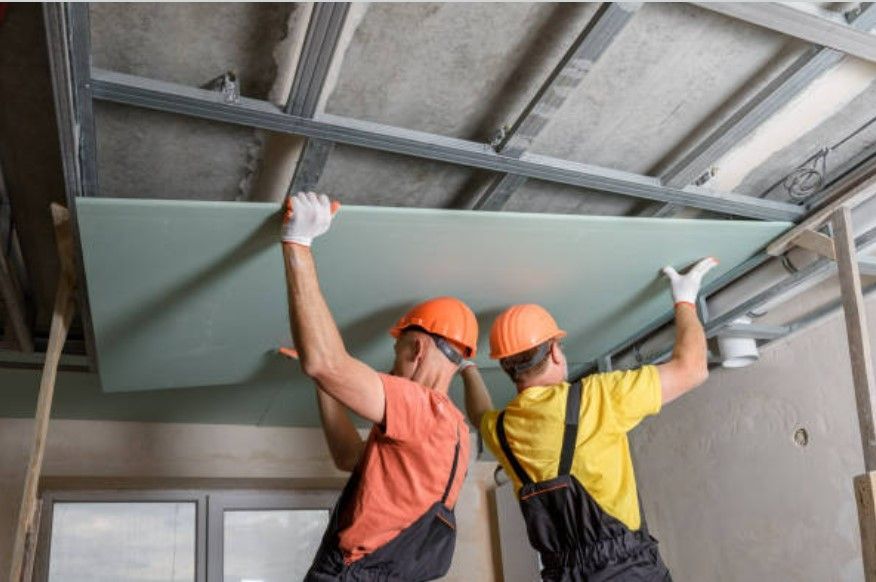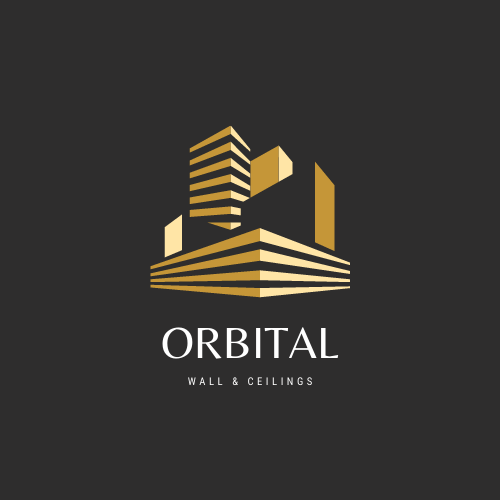Essential Parts for T-Bar Ceiling Installation and Orbital Wall Systems: A Detailed Overview
A t-bar ceiling grid forms the essential structure of your ceiling. Its goal is to provide critical support to your ceiling tiles and comprises various metal components. We've compiled a comprehensive guide on understanding ceiling gridwork to help you build a secure system.
Components of T–Bar Ceiling Grid
Your grid will comprise many metal pieces that will interlock to form the ceiling framework. These main components are found in the majority of typical builds:
Edge Trim / Perimeter Wall Angle
The first ceiling grid material you'll need to install is edge trim. The edge trim, as the name implies, is easily installed around the perimeter of your room to produce uniformity and stability in your ceiling.
Main Runners
Main runners are the primary components that form the structural framework of a ceiling system. Your hanging ceiling wire hangers will thread through them. Moreover, they are typically made of metal and are installed perpendicular to the joists or existing ceiling. Main runners provide the foundation for suspending the ceiling panels and other components. Once installed, your suspended ceiling design should begin to take shape.
These components are important. Main runners ensure stability and strength in the ceiling system. They allow for easy installation and adjustment of ceiling panels and other accessories.

Cross Tees
After that, you must insert your cross tees into your main runners. To do so, insert them into the pre-punched holes on the main tee bars. This will form secure gaps for your ceiling tiles.
Cross tees are secondary components that intersect with the main runners, forming the grid pattern of the ceiling system. These tees are available in various lengths to accommodate different ceiling dimensions.
These cross tees are important in supporting and securing the ceiling panels. They provide stability and uniformity to the ceiling grid. Furthermore, cross tees allow for easy removal and replacement of individual ceiling panels for maintenance or utility access.
Ceiling Panels
Ceiling panels, also known as ceiling tiles, are the visible surface of the ceiling system. These panels are available in various materials, sizes, and designs to suit various aesthetic preferences and functional requirements. Ceiling panels fit into the T-Bar grid and can be easily removed or replaced.
These panels enhance the acoustic and thermal insulation of a space. They offer options for customizing the appearance of the ceiling with different textures, colours, and patterns.
T-Bar Ceiling Grid Types
You will require guidance in choosing the best system for your needs if you install a suspended ceiling grid from scratch. Some of the most prevalent ceiling grid systems are as follows:
Ceiling Grid 24mm (Exposed Ceiling Grid)
One of the most common grid sizes is 24mm. It works with some of our most popular ceiling panels, such as square and tegular edge tiles. Because the gridwork is visible after the tiles are set, this ceiling grid is known as an exposed one.
Ceiling Grid 15mm (Exposed and Concealed / Semi-Concealed)
A 15mm grid, on the other hand, has a small framework and is compatible with microlook edge ceiling tiles. Because the tiles have rebated edges, the panels sit somewhat below the gridwork. Because of this suspended ceiling element, your grid will not be seen from below. 15mm ceiling grids work with square edge ceiling tiles as well.
Wall Systems
For wall systems, here are some components needed to prioritize.
Wall Tracks
Wall tracks are the backbone of an orbital wall system. These metal tracks are mounted horizontally along the wall, providing support and stability for the various components of the system. Wall tracks can be secured directly to the wall or suspended from the ceiling. It can depend on the specific application.
Wall tracks allow for flexible and adjustable placement of wall system components.
They offer a durable and reliable framework for supporting various wall-mounted elements.
Mounting Brackets
Mounting brackets are attached to the wall tracks and serve as the connection points for shelves, cabinets, and other wall-mounted fixtures. These brackets are designed to be easily adjustable, allowing for convenient repositioning or removing the wall-mounted components.
These brackets provide secure support for wall-mounted elements, ensuring stability and durability.
They offer flexibility in arranging and rearranging the components of the orbital wall system.
Accessories and Shelves
Orbital wall systems often include accessories and shelves to maximize storage and display capabilities. These can include hooks, bins, hanging rails, and adjustable shelves. These components can be easily attached or detached from the mounting brackets, offering versatility in organizing the space.
Accessories and shelves enhance the functionality of the orbital wall system by providing storage solutions and display options. They allow for efficient space utilization and customization to meet specific needs.

Trust Orbital Wall And Ceilings For Your T-Bar Ceiling Installation
T-Bar ceiling installation and wall systems provide practical commercial and residential space solutions. Understanding the essential parts of these systems is crucial for successful installation and optimal functionality. By leveraging these components effectively, you can optimize your spaces.
Please do not hesitate to contact our skilled team at Orbital Wall and Ceilings for guidance on the optimal package for your space. We know what we're doing when it comes to
t-bar ceilings. We are proud to deliver the finest installation services across the local region, thanks to our decades of experience and strong industry connections.
Please contact us if you want to learn more about our ceiling installation. Our team is always happy to answer any queries, from installation to product advice.

